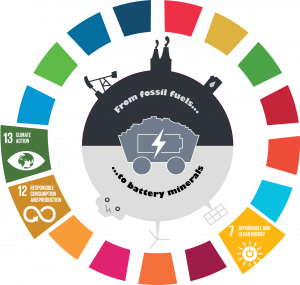
Welcome!
The blog you are reading right now is a final output of the course “Geographies of Inequalities 2021”, part of the course palette in Human geography / Univ. Helsinki. All the content is produced by students, incl. visualizations. The course was implemented together with the National Audit Office of Finland. The main learning objectives were to be able to critically evaluate sustainability dimensions and to understand the spillover effects of different policies in the context of global mining. The responsible teacher of the course was Associate prof. Pia Bäcklund and the key collaborating partner was deputy director Vivi Niemenmaa / NAOF Here you can find the short introductions to the four themes dealt with in this blog. In a blog, there is also a short intro post to the connections of the Agenda2030 program and mining business.
Exploring the Negative Impacts of Mining
Mining plays a central role in the global energy shift to more sustainable and environmentally friendly technologies. Minerals such as cobalt, lithium, nickel and copper are used in rechargeable batteries that are essential in green technologies such as electric cars, wind turbines and solar panels. Albeit green technologies are aiming to alleviate climate change and environmental issues, they also generate negative environmental and socio-economic impacts and spillovers globally. These side effects need to be taken into careful consideration. Otherwise, we won’t achieve the sustainable development goals set by the United Nation.
Recycling and Green Technologies
To reduce CO2 emission, especially in the EU context with the Paris Agreement, batteries become a source to produce energy on the way to a low-carbon future. The rise of the population, urbanization, technologies and innovation drive the consumption of the use of more and more products and the majority run by batteries. “Worldwide battery sales in 2019 are predicted to reach $120 billion, increasing at a rate of 7.7% annually” (Dehghani-Sanij et al. 2019). This demand has some different positive and negative impacts on the use of batteries.
Case Studies
Mining can never be fully sustainable in all three dimensions of being ecologically, socially and economically sustainable. At least one, often all areas, are somehow compromised. Still, many positive spillover effects can be linked to the mining industry especially when looking at the employment effect, which often contributes in terms of well-being to the whole community.
In this text, we will take a closer look at the negative and positive impacts of the mining industry by presenting a few case studies from Finland and The Democratic Republic of the Congo (DRC). The spillover effects of the mining industry are diverse and appear differently in different societal contexts. In developing countries, where there is no reliable government and enforcement, mining appears to have more far-reaching negative than positive spillover effects on society. When researching, especially the positive spillovers of mining, we must remember to be extremely critical since the findings are often presented by the mining actors themselves. Therefore, the results might be manipulated to justify the action.
The Winners of Mining
The winners of mining tend to be centralized in the regions far away from the mines themselves. The newest innovations, wealthy lifestyle and wellbeing tend to concentrate in the urban areas of the world while the negative impacts of mining are felt elsewhere. Even with strong negative impacts on the local ecosystems and societies, the mining industry has the potential to become more sustainable and provide for wellbeing locally as well. This text presents the positive impacts that the mining industry has on different scales.
